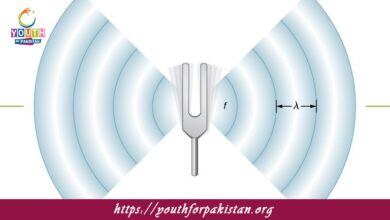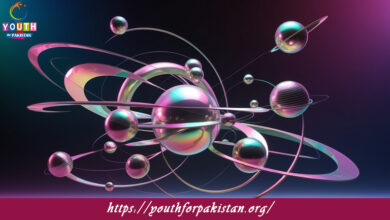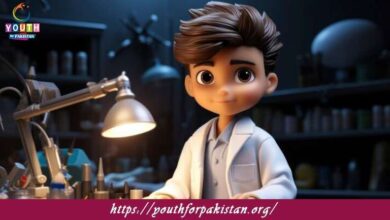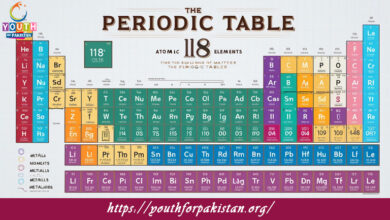Le Chatelier’s Principles MDCAT MCQs with Answers
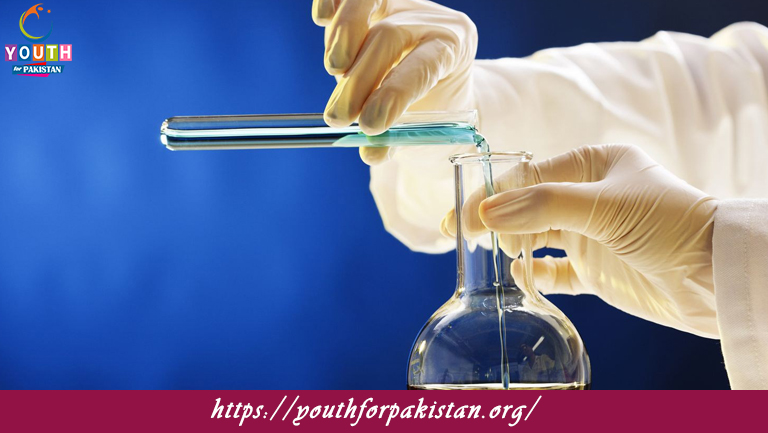
Welcome to the Le Chatelier’s Principles MDCAT MCQs with Answers. In this post, we have shared Le Chatelier’s Principles Multiple Choice Questions and Answers for PMC MDCAT 2024. Each question in MDCAT Chemistry offers a chance to enhance your knowledge regarding Le Chatelier’s Principles MCQs in this MDCAT Online Test.
According to Le Chatelier’s Principle, if a system at equilibrium is subjected to a change in concentration, the system will:
a) Shift to counteract the change
b) Remain unaffected
c) Shift to increase the change
d) Change direction randomly
If the concentration of reactants is increased in a reversible reaction, the equilibrium will shift:
a) To the right
b) To the left
c) No shift
d) In both directions equally
In an exothermic reaction, increasing the temperature will cause the equilibrium to shift:
a) To the right
b) To the left
c) No change
d) Depends on the concentration
For an endothermic reaction, increasing the temperature will shift the equilibrium:
a) To the left
b) To the right
c) No shift
d) Decrease the rate of reaction
If a catalyst is added to a reaction at equilibrium, the catalyst will:
a) Shift the equilibrium position
b) Increase the rate at which equilibrium is reached
c) Change the equilibrium constant
d) Have no effect on the equilibrium
According to Le Chatelier’s Principle, adding more product to a system at equilibrium will shift the equilibrium:
a) To the right
b) To the left
c) No change
d) Increase the temperature
A decrease in pressure in a reaction involving gases will shift the equilibrium:
a) To the side with fewer moles of gas
b) To the side with more moles of gas
c) No shift
d) To the side with equal moles of gas
In a reaction where the number of moles of gas is the same on both sides, changing the pressure will:
a) Shift the equilibrium to the right
b) Shift the equilibrium to the left
c) Have no effect on the equilibrium
d) Increase the concentration of products
If a system at equilibrium is subjected to a volume change, the equilibrium will shift:
a) To the side with more gas molecules
b) To the side with fewer gas molecules
c) No shift
d) In a direction to increase the temperature
Adding an inert gas to a system at equilibrium will:
a) Shift the equilibrium to the right
b) Shift the equilibrium to the left
c) Have no effect on the equilibrium position
d) Increase the rate of reaction
Le Chatelier’s Principle can be used to predict the effect of:
a) Pressure changes
b) Concentration changes
c) Temperature changes
d) All of the above
For the reaction: N₂(g) + 3H₂(g) ⇌ 2NH₃(g), decreasing the volume will shift the equilibrium:
a) To the right
b) To the left
c) No shift
d) Increase the rate of reaction
In the reaction: CO(g) + Cl₂(g) ⇌ COCl₂(g), increasing the pressure will:
a) Shift the equilibrium to the right
b) Shift the equilibrium to the left
c) Have no effect on the equilibrium
d) Change the rate of reaction
If a reactant is removed from a system at equilibrium, the equilibrium will shift:
a) To the right
b) To the left
c) No shift
d) Increase the pressure
Adding a common ion to a system will generally:
a) Shift the equilibrium to the side with fewer ions
b) Shift the equilibrium to the side with more ions
c) Have no effect on the equilibrium
d) Increase the temperature
For the reaction: A + B ⇌ C + D, increasing the concentration of A will:
a) Shift the equilibrium to the right
b) Shift the equilibrium to the left
c) No shift
d) Decrease the concentration of C
When a system at equilibrium is compressed, the equilibrium shifts:
a) To the side with more gas molecules
b) To the side with fewer gas molecules
c) No change
d) To increase the volume
The equilibrium constant of a reaction is affected by:
a) Changes in concentration
b) Changes in pressure
c) Changes in temperature
d) Changes in catalyst concentration
In an exothermic reaction, adding heat will cause the equilibrium to shift:
a) To the right
b) To the left
c) No change
d) Increase the rate of reaction
Increasing the concentration of a product in a reaction at equilibrium will:
a) Shift the equilibrium to the right
b) Shift the equilibrium to the left
c) Have no effect on the equilibrium
d) Increase the rate of reaction
In the reaction: 2SO₂(g) + O₂(g) ⇌ 2SO₃(g), increasing the pressure will shift the equilibrium:
a) To the right
b) To the left
c) No shift
d) Change the equilibrium constant
Adding a catalyst to a reaction at equilibrium will:
a) Increase the yield of products
b) Decrease the activation energy
c) Shift the equilibrium position
d) Change the equilibrium constant
The effect of dilution on an equilibrium system depends on:
a) The reaction’s exothermic or endothermic nature
b) The concentration of reactants and products
c) The presence of a catalyst
d) The color of the solution
In a reaction involving gas-phase equilibria, decreasing the volume of the container will:
a) Increase the concentration of gases
b) Shift the equilibrium to the side with fewer gas molecules
c) Shift the equilibrium to the side with more gas molecules
d) Have no effect on the equilibrium
For the reaction: H₂(g) + I₂(g) ⇌ 2HI(g), decreasing the volume of the reaction vessel will:
a) Increase the concentration of H₂ and I₂
b) Decrease the concentration of HI
c) Shift the equilibrium to the right
d) Shift the equilibrium to the left
The addition of a non-reactive gas to a system at equilibrium will:
a) Change the equilibrium constant
b) Shift the equilibrium to the right
c) Shift the equilibrium to the left
d) Have no effect on the equilibrium position
The principle used to predict the effect of changes in conditions on a reaction at equilibrium is:
a) Dalton’s Law
b) Le Chatelier’s Principle
c) Henry’s Law
d) Raoult’s Law
In the reaction: 2A + B ⇌ C + D, if the concentration of B is decreased, the equilibrium will shift:
a) To the right
b) To the left
c) No shift
d) Increase the rate of formation of products
In a system where the reaction is: N₂(g) + 3H₂(g) ⇌ 2NH₃(g), if the volume of the reaction container is increased, the equilibrium will shift:
a) To the left
b) To the right
c) No shift
d) Increase the pressure
In a reaction that absorbs heat (endothermic), what effect will increasing the temperature have on the equilibrium?
a) Shift the equilibrium to the left
b) Shift the equilibrium to the right
c) No change
d) Increase the rate of reaction
The equilibrium of a reaction can be shifted to increase the production of products by:
a) Increasing the pressure in a gas-phase reaction
b) Decreasing the temperature in an endothermic reaction
c) Adding more of a reactant
d) All of the above
For the reaction: 2SO₂(g) + O₂(g) ⇌ 2SO₃(g), increasing the concentration of SO₂ will:
a) Shift the equilibrium to the right
b) Shift the equilibrium to the left
c) Have no effect on the equilibrium
d) Change the rate of reaction
In the reaction: CO(g) + Cl₂(g) ⇌ COCl₂(g), increasing the temperature will:
a) Shift the equilibrium to the left
b) Shift the equilibrium to the right
c) No shift
d) Change the equilibrium constant
A system at equilibrium will adjust its position to:
a) Increase the rate of reaction
b) Decrease the activation energy
c) Counteract any change in concentration, pressure, or temperature
d) Shift towards the formation of reactants
The addition of a substance that does not react with the components of the equilibrium will:
a) Shift the equilibrium
b) Change the equilibrium constant
c) Increase the concentration of products
d) Have no effect on the equilibrium
For the equilibrium reaction: N₂(g) + 3H₂(g) ⇌ 2NH₃(g), decreasing the temperature will:
a) Increase the equilibrium constant
b) Decrease the equilibrium constant
c) No change in equilibrium constant
d) Shift the equilibrium to the right
In a reaction where the forward reaction is endothermic, decreasing the temperature will:
a) Shift the equilibrium to the left
b) Shift the equilibrium to the right
c) No effect
d) Increase the rate of formation of products
A shift in equilibrium position due to a change in concentration is described by:
a) Le Chatelier’s Principle
b) Raoult’s Law
c) Henry’s Law
d) Dalton’s Law
The principle that explains the effect of pressure changes on gaseous equilibria is:
a) Raoult’s Law
b) Le Chatelier’s Principle
c) Dalton’s Law
d) Henry’s Law
When a system at equilibrium is subjected to a decrease in volume, the equilibrium will:
a) Shift to the side with more gas molecules
b) Shift to the side with fewer gas molecules
c) No shift
d) Increase the concentration of reactants
If you are interested to enhance your knowledge regarding Physics, Chemistry, Computer, and Biology please click on the link of each category, you will be redirected to dedicated website for each category.


